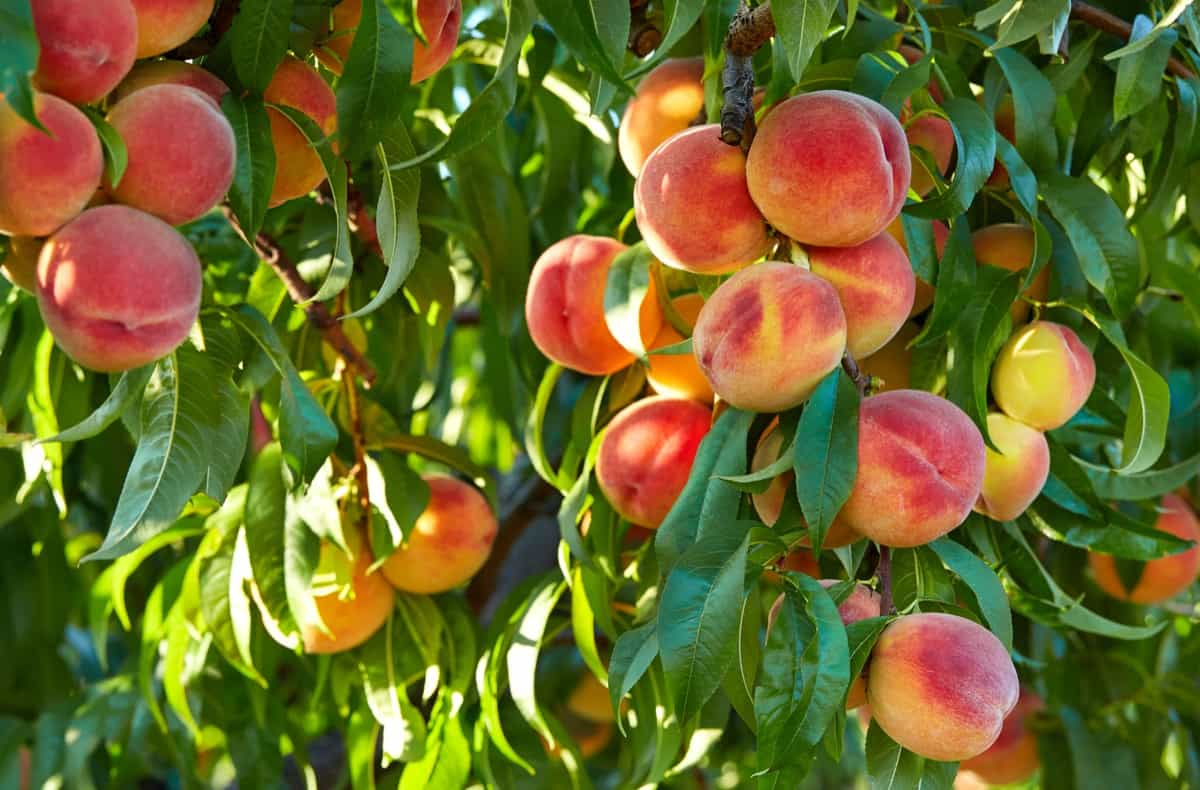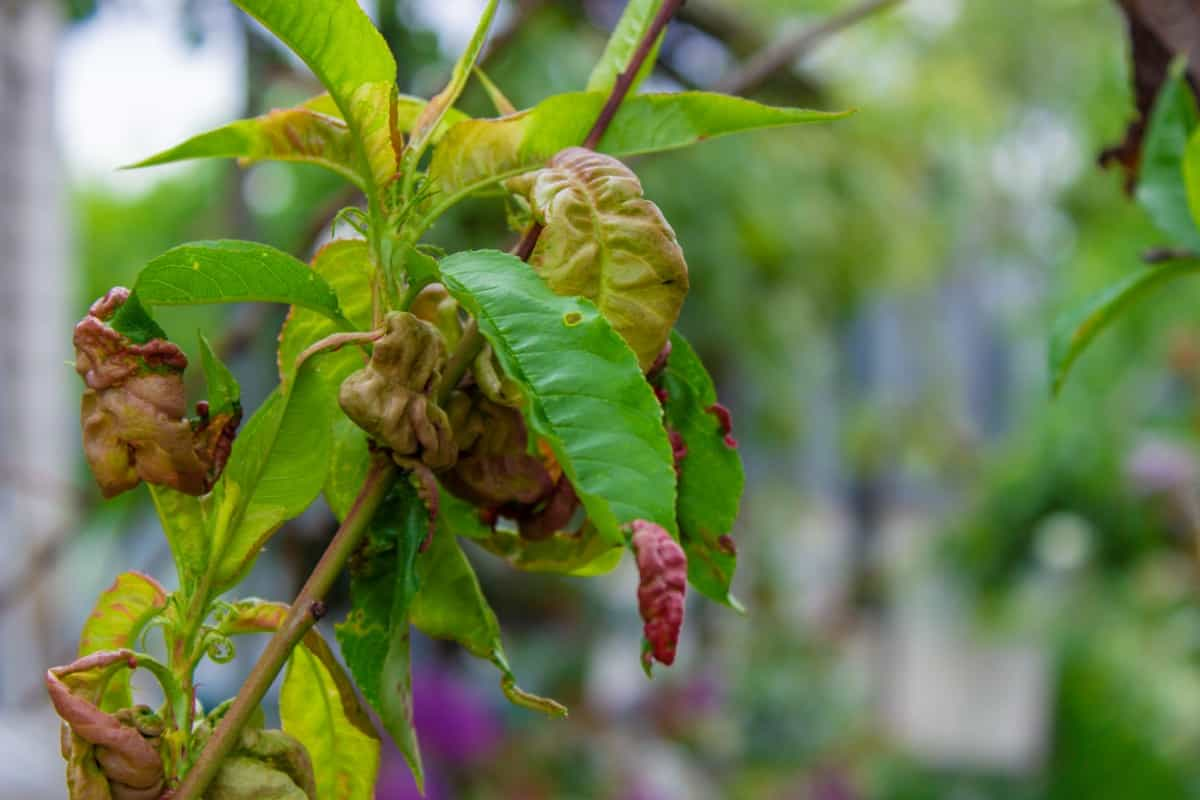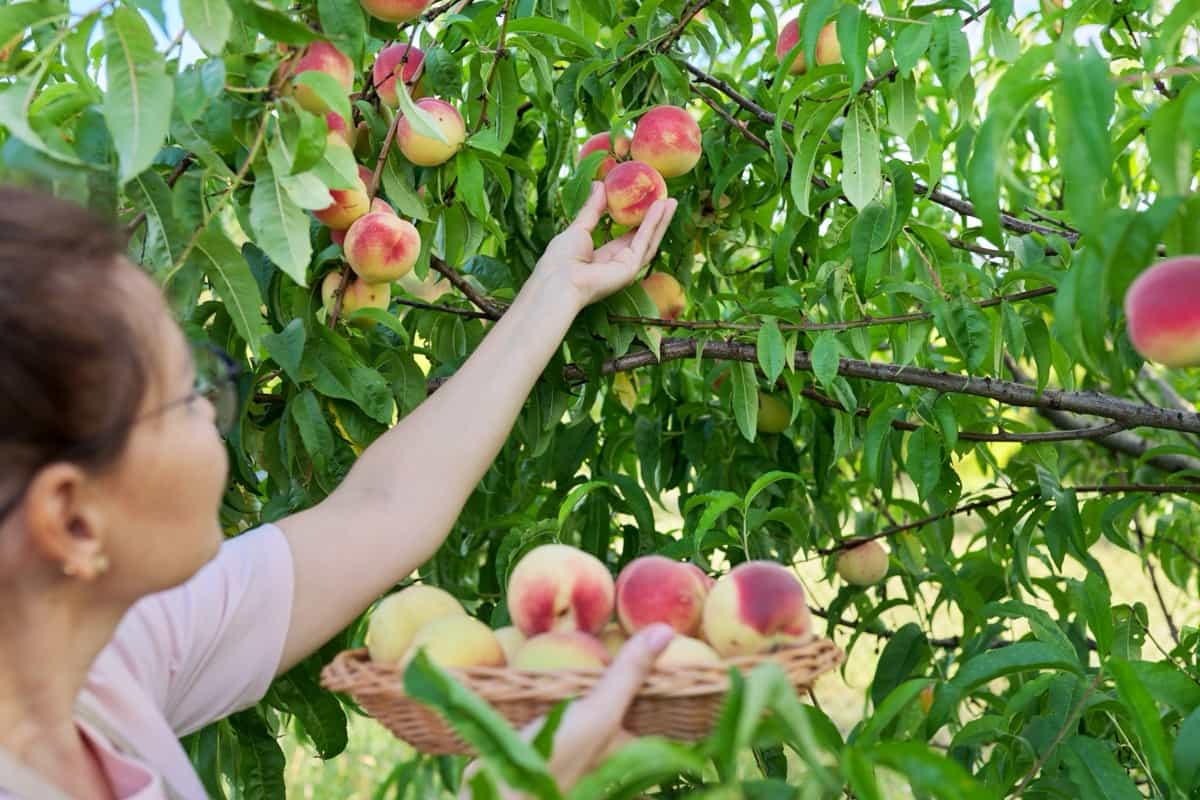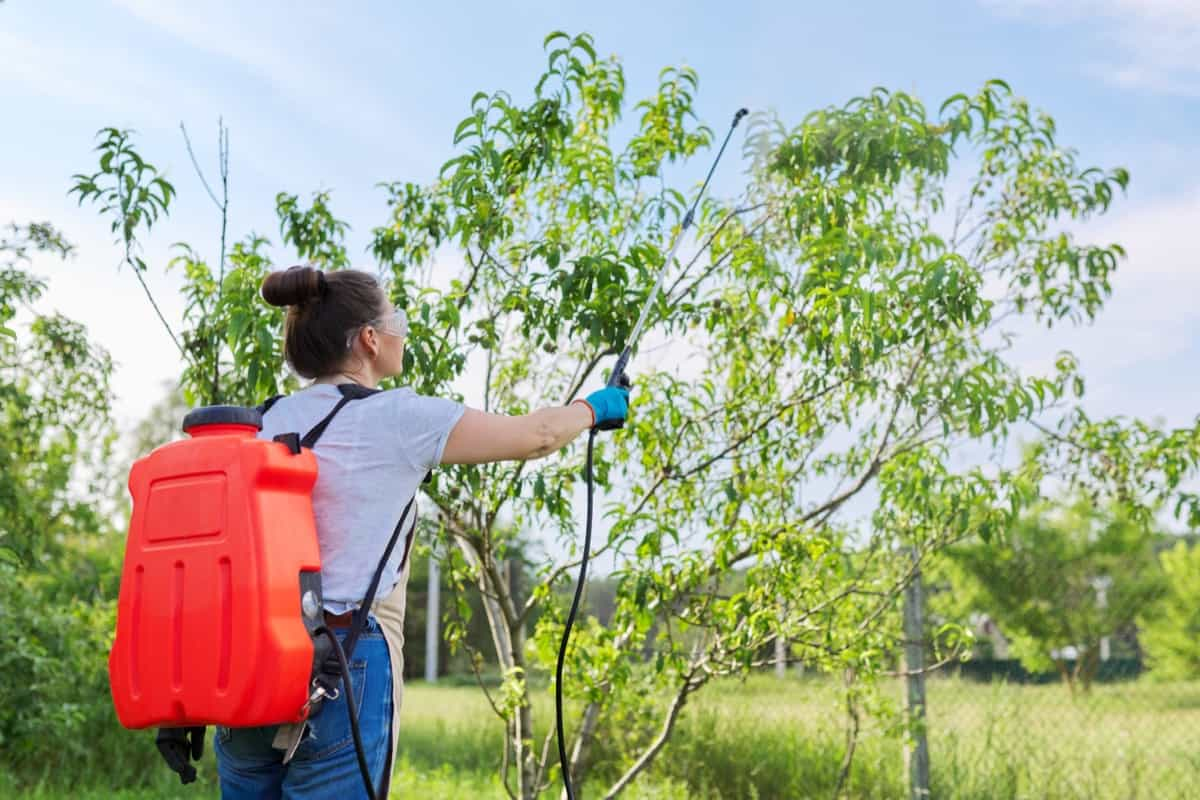Controlling peach pests using natural and organic treatments is an environmentally friendly way to protect your peach trees and fruit from common insects and diseases. These methods avoid the use of synthetic chemicals and promote a healthier and more sustainable approach to pest management. Here’s a simple guide on how to get rid of peach pests naturally and organically.

How to Control Peach Pests Naturally
Peach Pests: Identifying the Most Common Pests and Their Impact on Your Crop
- Flat-headed borers are wood-boring insects that damage trees by creating tunnels in the wood.
- Hairy caterpillars, like the oriental fruit moth larva, consume peach leaves and fruit, leading to reduced yields.
- Defoliating beetles, such as Japanese beetles, feed on peach foliage, causing defoliation.
- Peach leaf curl aphids damage leaves, resulting in distortion and reduced photosynthesis.
- Apricot brown scale and San Jose scale can affect the fruit’s appearance and quality.
- Tent caterpillars create silk tents in tree branches and consume leaves.
- Blossom thrips can harm flowers and reduce fruit set. Root-knot nematodes affect root health, leading to stunted growth.
- Green peach aphids feed on peach leaves and can transmit plant viruses, stunting growth and reducing fruit quality. Heavy infestations can lead to fruit distortion and reduced yields.
- Peach twig borers damage the tree by tunneling into the branches, shoots, and developing fruit. This can lead to dieback, reduced fruit quality, and increased susceptibility to disease.
- Plum Curculio feeds on young fruit, leaving characteristic crescent-shaped scars. Larvae tunnel into the fruit, causing it to drop prematurely.
- European earwigs feed on leaves, flowers, and fruit, causing surface damage and making the fruit more susceptible to other pests and diseases.
Using Neem Oil to Control Peach Pests: A Safe and Effective Method
Neem oil Derived from the neem tree contains compounds that disrupt the life cycle of various pests, including aphids, mites, and caterpillars. When applied as a spray, neem oil coats pests and suffocates them while acting as a deterrent. Moreover, it does not harm beneficial insects or plants, making it an eco-friendly choice. Neem oil is biodegradable and poses minimal risk to humans and animals. Regular application during the growing season can help maintain healthy peach trees and yield high-quality fruit without resorting to synthetic chemicals.
In case you missed it: How to Control Grapefruit Pests Naturally: How to Get Rid of Them with Natural and Organic Treatment

The Role of Beneficial Insects in Controlling Peach Pests: Introduction of Predatory Insects
Predatory insects like ladybugs, lacewings, and parasitoid wasps are introduced to regulate pest populations. Ladybugs, voracious aphid predators, help keep sap-sucking pests in check. Lacewings consume a variety of pests, including aphids, mites, and small caterpillars. Parasitoid wasps lay their eggs inside pest insects, ultimately leading to their demise. These natural predators establish a balanced ecosystem, reducing the need for chemical interventions.
Companion Planting: How Planting Certain Plants Together Can Deter Peach Pests
Companion planting involves strategically placing certain plants alongside peach trees to deter common pests. For instance, planting marigolds can repel nematodes that harm peach roots. Nasturtiums, with their peppery scent, help deter aphids and whiteflies. Garlic and chives act as natural repellents for various pests due to their strong odor. Interplanting herbs like basil and mint can confuse and deter pests with their strong scents. These companion plants create a natural barrier and reduce the attraction of pests to peach trees, decreasing the need for chemical pesticides.
Crop Rotation: How Rotating Your Peach Crop Can Help Control Pests
Crop rotation is a strategic farming practice that involves changing the type of crop grown in a particular area each season. By rotating peach crops with unrelated plant species, the life cycles of peach-specific pests are disrupted. This reduces the buildup of pest populations in the soil and minimizes the risk of infestations. Crop rotation also enhances soil health and fertility, making it less hospitable to pests. The practice effectively controls nematodes, pathogens, and other soilborne pests, reducing the reliance on chemical treatments.
Using Diatomaceous Earth to Control Peach Pests: A Non-Toxic and Organic Method
Diatomaceous Earth (DE) is a non-toxic and organic approach to controlling peach pests. It comprises the fossilized remains of diatoms and has abrasive, microscopic particles that damage the exoskeletons of insects. When pests like ants, aphids, and crawling insects come into contact with DE, it dehydrates and ultimately kills them. DE is safe for humans, animals, and beneficial insects, making it an eco-friendly alternative to chemical pesticides. Regularly dusting peach trees with DE helps prevent pest infestations, maintaining a healthy orchard without harming the environment.
In case you missed it: How to Control Okra Fusarium Wilt Naturally: How to Get Rid of This with Natural and Organic Treatment

Traps and Barriers: How to Use Traps and Barriers to Control Peach Pests
Traps and barriers are effective tools in peach pest management. Sticky traps, often yellow or blue, attract and capture flying pests like aphids and fruit flies. Pheromone traps lure specific pests, disrupting their mating patterns. Tree wraps or collars are physical barriers to stop crawling insects from ascending the tree trunk. Fine mesh netting shields fruit from birds and insects. Row covers create a physical barrier to deter pests, allowing sunlight and rain to nourish the tree.
Biological Control: How to Use Parasitic Wasps to Control Peach Pests
Parasitic wasps are valuable allies in peach pest control. Species like Trichogramma and Encarsia lay their eggs inside the eggs or larvae of pests like moths and whiteflies. After the larvae hatch, they consume the host from inside, ultimately killing it. To use parasitic wasps, release them when pest populations are low before they become a significant problem. Ensure the orchard provides suitable habitats, such as nectar-rich flowers, to sustain adult wasps. Monitor pest levels regularly to determine the optimal timing for releases.
Integrated Pest Management (IPM): A Holistic Approach to Controlling Peach Pests
Integrated Pest Management (IPM) is a comprehensive and sustainable approach to managing peach pests. It combines various strategies, including cultural, biological, and chemical controls, focusing on minimizing environmental impact. IPM involves regular monitoring of pest populations, setting economic thresholds, and making informed decisions.
It promotes the use of beneficial insects, crop rotation, and trap crops to reduce pest pressure. Chemical interventions are a last resort; if necessary, selective and less toxic pesticides are employed. By balancing these techniques, IPM minimizes the harm to beneficial organisms, maintains ecosystem health, and ensures peach crops’ long-term productivity and quality while reducing reliance on harmful chemicals.
In case you missed it: How to Control Okra Leaf Spot Naturally: How to Get Rid of This with Natural and Organic Treatment

Conclusion
In conclusion, effectively managing peach pests through natural and organic treatments is safe and promotes sustainability. Employing companion planting, beneficial insects, crop rotation, diatomaceous earth, traps, barriers, and an integrated pest management approach can help maintain a healthy orchard, reduce environmental impact, and produce high-quality peaches without harmful chemicals.
- Deworming Schedule for Dogs/Puppies: A Beginners Guide
- How to Prevent and Control Parasites in Goats
- Beneficial Insects in Pest Management
- Natural Solutions for Pest Control in Flower Gardens
- Types of Fungicides Used in Agriculture
- Common Issues in the Fruit Development Stage of Pomegranate Farming
- Fruit Development Issues in Papaya: Easy Solutions and Treatment
- Soil-Borne Diseases and How to Protect Your Plants
- Practices to Prevent Disease Spread in the Garden